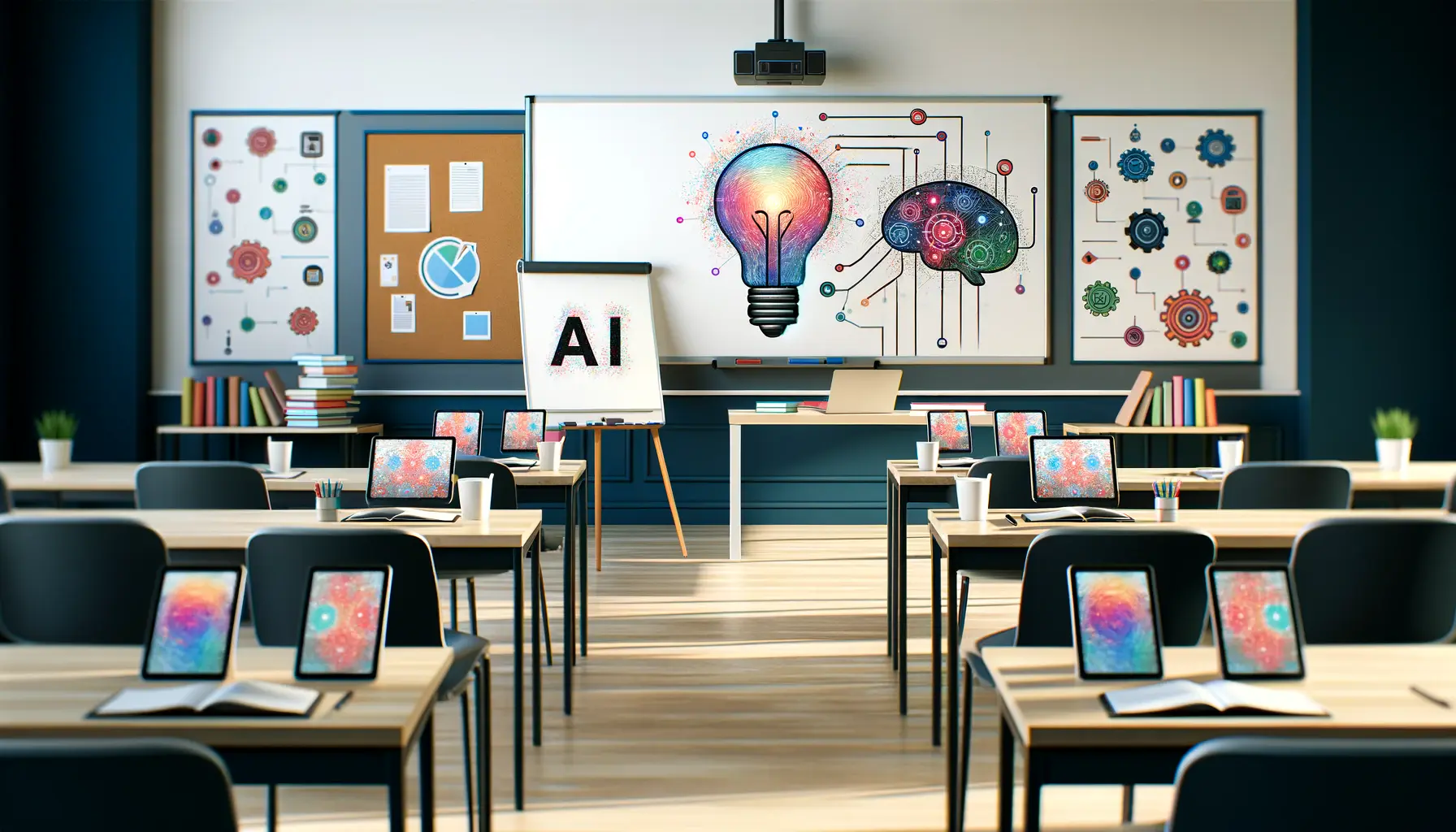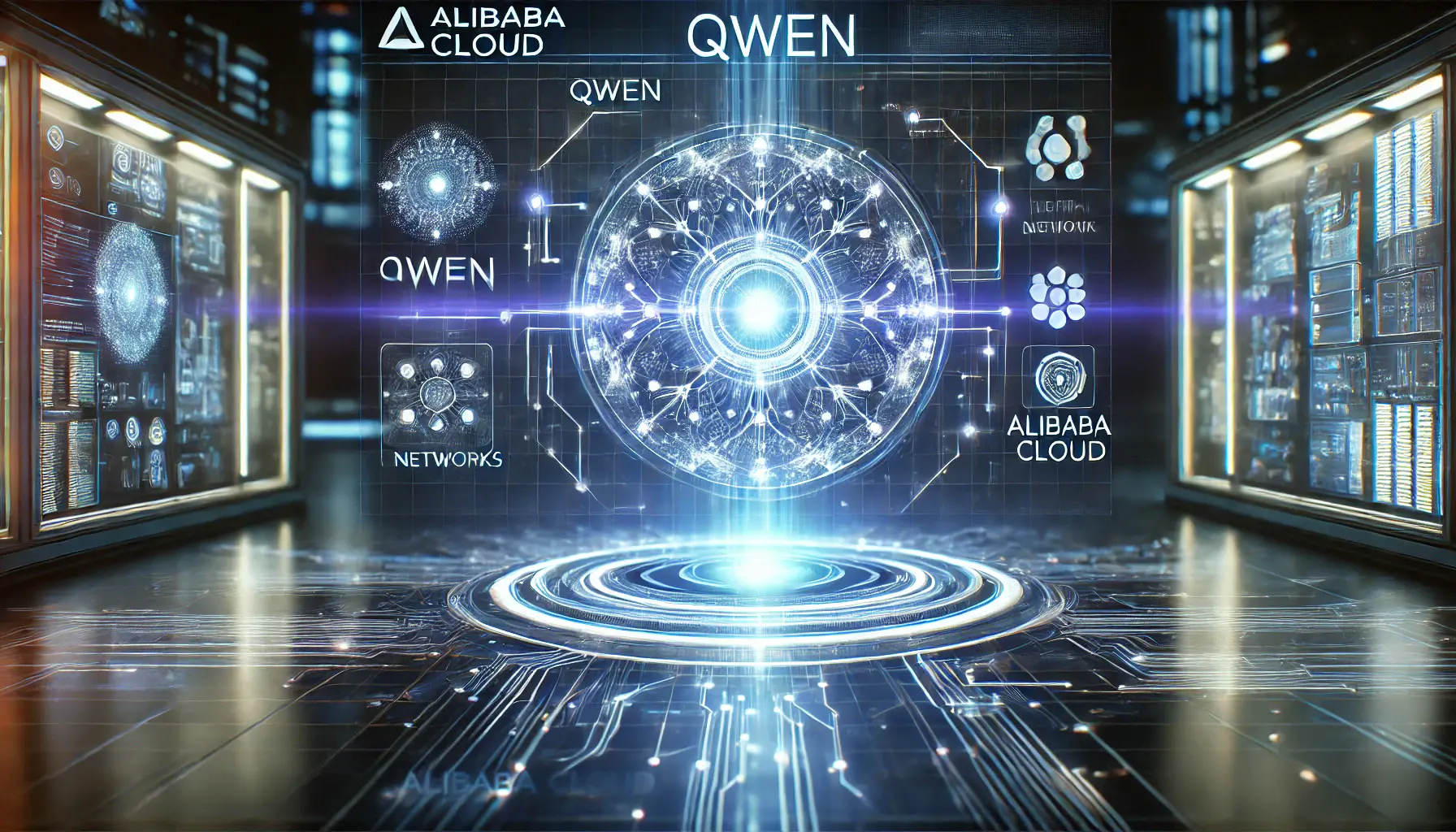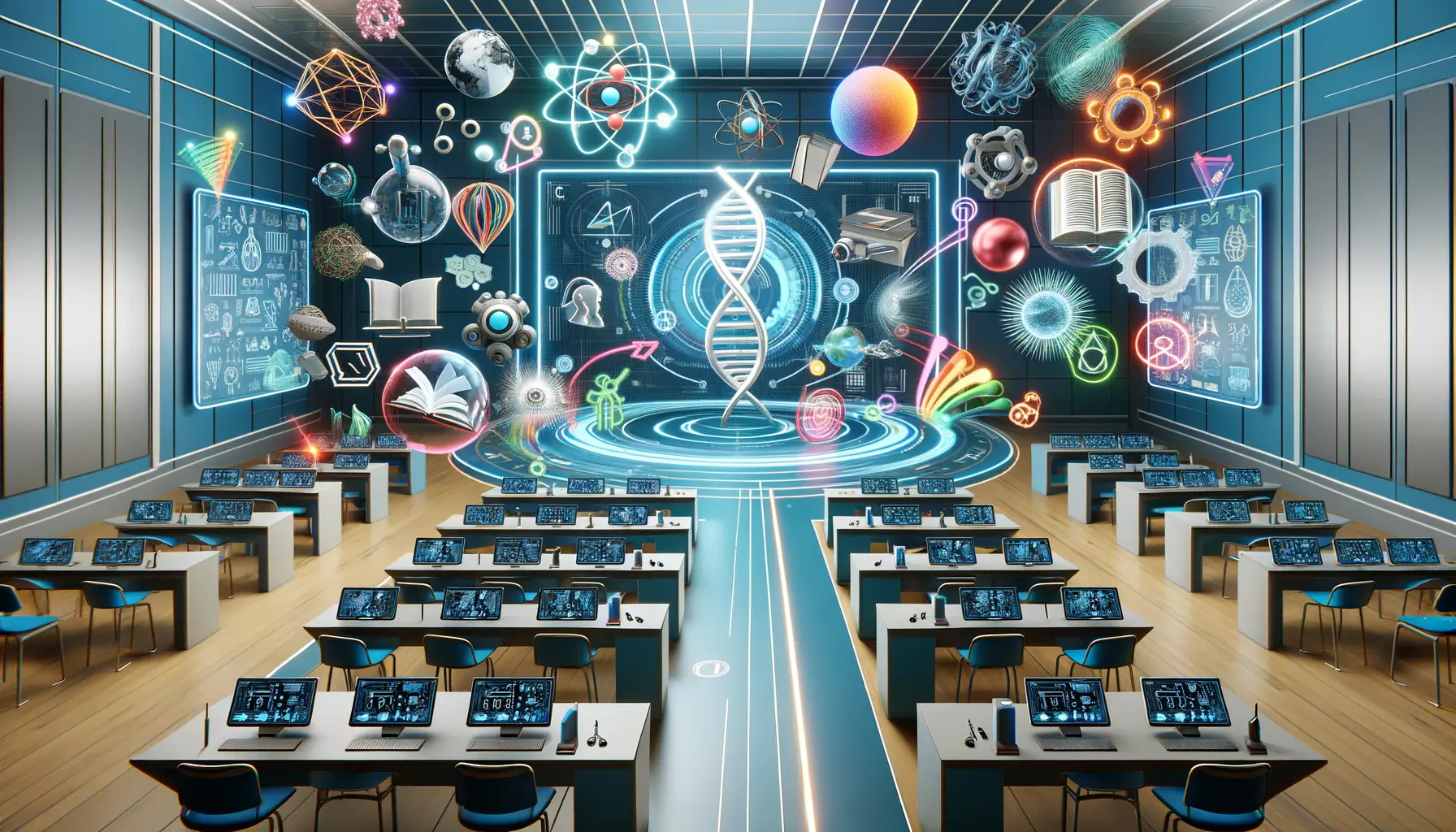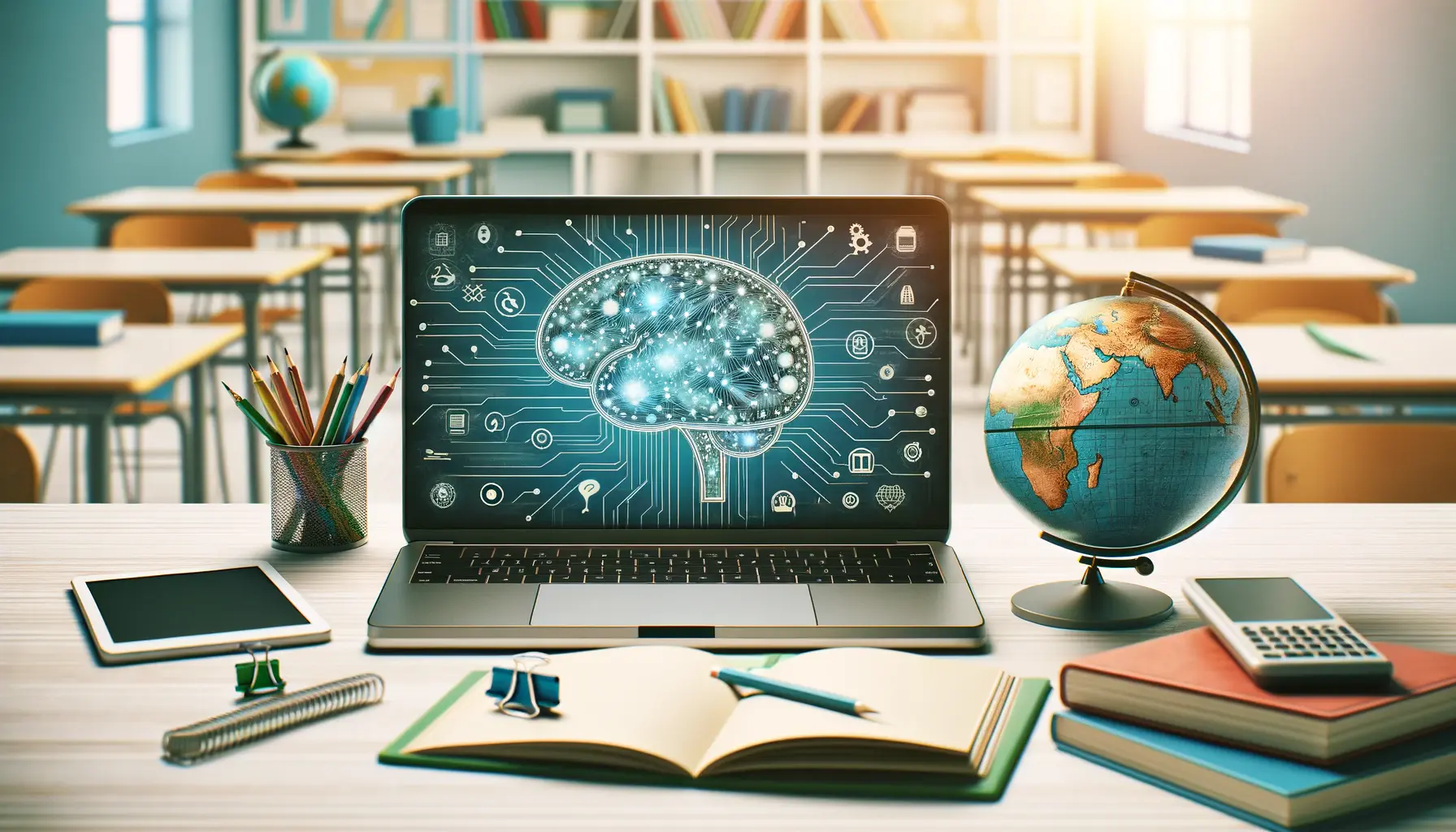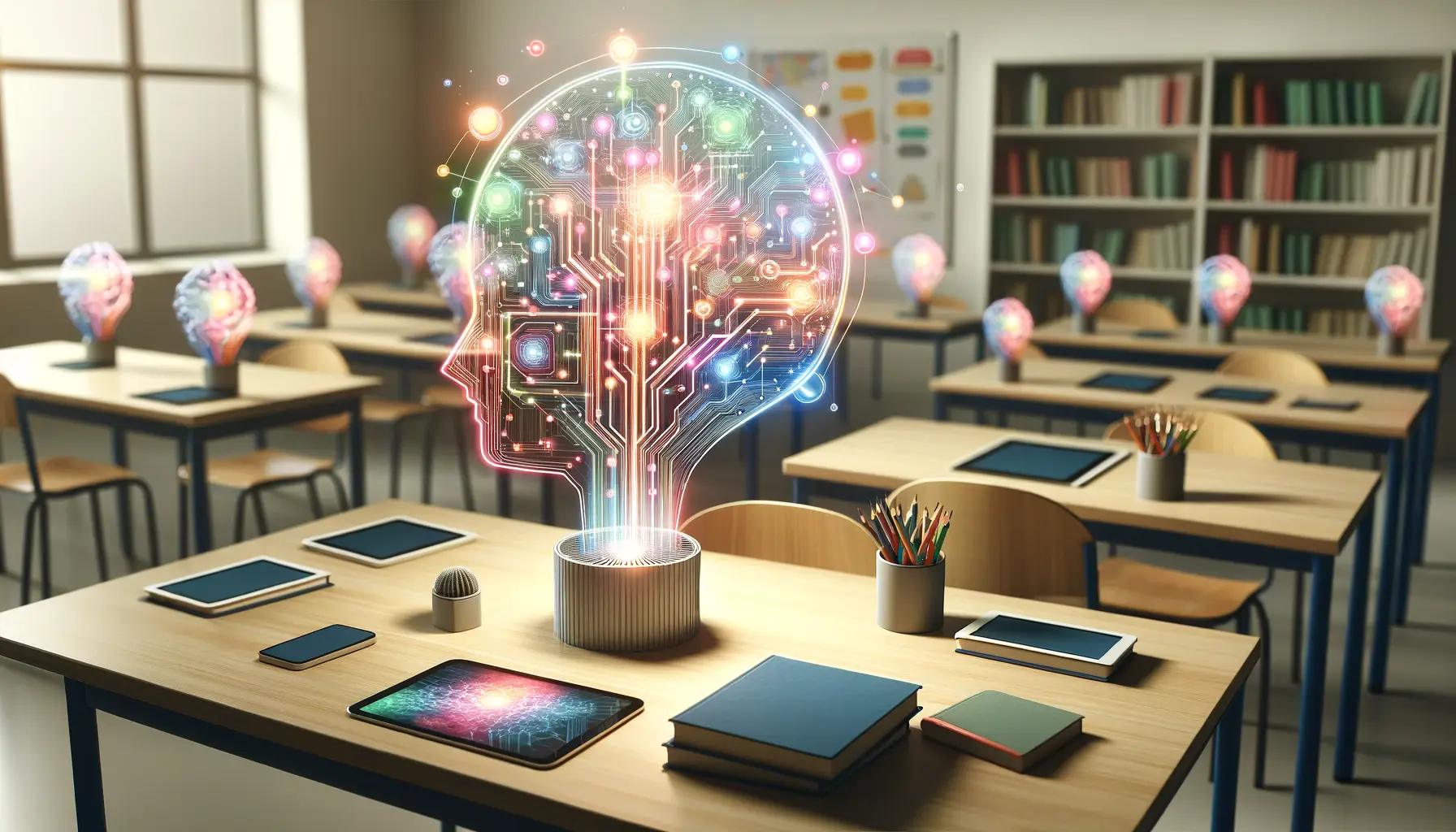The integration of artificial intelligence (AI) into the educational sector has marked a significant leap towards innovative teaching and learning methodologies.
Among these advancements, DALL-E, an AI program developed by OpenAI, stands out as a transformative tool in the realm of education.
This AI-driven image generator has not only captivated the imagination of tech enthusiasts but has also opened new avenues for enhancing learning experiences across various educational settings.
At its core, DALL-E is designed to generate images from textual descriptions, providing a unique intersection between language and visual representation.
This capability has profound implications for education, offering educators and students alike the opportunity to explore concepts in a more interactive and engaging manner.
The application of DALL-E in education transcends traditional learning barriers, fostering creativity, enhancing visual learning, and facilitating a personalized educational journey for students.
- Revolutionizing Visual Learning
- Personalizing the Learning Experience
- Facilitating Interactive Learning and Collaboration
- Overcoming Educational Challenges
- Encouraging Lifelong Learning and Curiosity
- Preparing Students for the Future Workforce
- Challenges and Ethical Considerations
- Empowering Education with DALL-E
- DALL-E in Education: Frequently Asked Questions
Revolutionizing Visual Learning
Bringing Concepts to Life
Visual learning is a critical component of educational development, aiding in the comprehension and retention of information.
DALL-E’s ability to generate detailed and accurate images from textual prompts revolutionizes the way educators can present complex concepts.
For instance, in a history lesson, instead of merely describing historical events, teachers can now provide visual representations created by DALL-E, making the past more tangible and engaging for students.
This visual approach not only aids in understanding but also stimulates students’ imaginations, encouraging them to explore subjects in depth.
The capacity to visualize theoretical concepts or historical events bridges the gap between abstract learning and practical understanding, enhancing the overall educational experience.
Enhancing Creative Expression
Creativity is an essential skill in the modern educational landscape, and DALL-E serves as a powerful catalyst in this domain.
By generating images based on students’ descriptions, DALL-E encourages learners to think creatively and articulate their thoughts in innovative ways.
This process not only enhances their creative writing skills but also allows them to see their ideas come to life, providing immediate visual feedback on their creative output.
Moreover, the use of DALL-E in art and design education opens up limitless possibilities for students to experiment with concepts and visual styles without the need for advanced drawing skills.
This democratization of creative expression ensures that all students, regardless of their artistic abilities, can participate in and benefit from art education.
DALL-E’s impact on visual learning and creative expression signifies a shift towards more interactive and personalized education, where students’ imagination and creativity are given free rein.
Personalizing the Learning Experience
The advent of AI in education, particularly through tools like DALL-E, has paved the way for personalized learning experiences that cater to the individual needs and preferences of students.
This personalization is crucial in fostering an environment where students can learn at their own pace, focusing on areas that interest them or require additional support.
Personalized learning experiences are not just about adapting to different learning styles; they also involve tailoring content to meet the unique educational goals of each student.
DALL-E contributes to this personalized approach by allowing educators to create custom visuals that align with the lesson’s objectives and the learners’ interests.
Customized Educational Content
- By inputting specific prompts, teachers can generate images that complement the lesson plan, making abstract concepts more accessible and engaging for students.
- DALL-E can produce visuals for a wide range of subjects, from science and mathematics to literature and social studies, ensuring that every lesson is as informative as it is visually appealing.
Supporting Diverse Learning Needs
- Students with visual learning preferences greatly benefit from DALL-E’s capabilities, as it aids in their understanding and retention of information.
- For learners who face challenges in traditional text-based learning environments, DALL-E’s visuals serve as an alternative pathway to knowledge, breaking down barriers to education.
Incorporating DALL-E into the educational toolkit not only enriches the learning experience but also ensures that education is inclusive, catering to the diverse needs of the student population.
Facilitating Interactive Learning and Collaboration
Interactive learning is a cornerstone of effective education, promoting engagement, critical thinking, and collaboration among students.
DALL-E enhances interactive learning by providing a platform for students to engage with the material and with each other in innovative ways.
Through the creation of AI-generated images, students can participate in collaborative projects, discussions, and activities that foster a deeper understanding of the subject matter.
Collaboration is further enhanced as students work together to create prompts for DALL-E, discuss the outcomes, and analyze the relevance and accuracy of the generated images in relation to their learning objectives.
This process not only strengthens their grasp of the content but also develops essential skills such as teamwork, communication, and critical thinking.
Project-Based Learning
- Students can collaborate on projects that require the integration of DALL-E images, such as creating a digital storybook, designing a virtual museum exhibit, or developing a presentation on a historical event.
- These projects encourage students to apply their knowledge creatively, engage in research, and work as a team to achieve a common goal.
Enhancing Discussion and Debate
- DALL-E-generated images can serve as prompts for class discussions, debates, and critical analysis, encouraging students to articulate their thoughts and listen to different perspectives.
- This interactive approach to learning helps students develop a more nuanced understanding of topics and fosters a classroom environment where diverse ideas and opinions are valued.
The integration of DALL-E into interactive learning and collaboration activities not only makes education more engaging but also prepares students for the collaborative and dynamic nature of the modern workplace.
Overcoming Educational Challenges
The integration of DALL-E into educational practices presents a unique opportunity to address and overcome some of the longstanding challenges in education.
By leveraging the capabilities of this advanced AI tool, educators can enhance engagement, comprehension, and retention among students, making learning more accessible and effective for everyone.
One of the most significant challenges in education is the need to cater to diverse learning styles and abilities within a single classroom.
DALL-E’s ability to create customized visual content on demand allows educators to present information in multiple formats, thereby accommodating different learning preferences and helping students grasp complex concepts more easily.
Addressing Diverse Learning Styles
- Visual learners can benefit from DALL-E-generated imagery that complements textual information, enhancing their understanding and retention of the material.
- Kinesthetic learners can engage with interactive activities that incorporate DALL-E visuals, such as creating storyboards or participating in role-play scenarios based on the generated images.
Supporting Special Education
- DALL-E can be particularly beneficial in special education settings, where personalized and visual learning materials can significantly impact students’ engagement and learning outcomes.
- By creating tailored visuals that align with individual learning plans, educators can better support students with special needs, ensuring that all learners have equal opportunities to succeed.
Enhancing Language Learning
- For students learning a new language, DALL-E-generated images can serve as visual aids to reinforce vocabulary, grammar, and cultural concepts, making language learning more interactive and enjoyable.
- This visual approach can help break down language barriers and facilitate a deeper understanding and appreciation of the language being studied.
DALL-E’s impact on overcoming educational challenges highlights the potential of AI to transform traditional teaching methods and create a more inclusive, engaging, and effective learning environment.
Encouraging Lifelong Learning and Curiosity
The dynamic capabilities of DALL-E extend beyond the traditional classroom, fostering an environment of lifelong learning and curiosity.
By integrating DALL-E into educational activities, educators can inspire students to pursue knowledge beyond their formal education, cultivating a mindset geared towards continuous learning and exploration.
Lifelong learning is essential in today’s rapidly changing world, where new knowledge and skills are constantly required to navigate the complexities of work and life.
DALL-E, with its ability to generate novel and engaging content, serves as a tool for sparking curiosity and encouraging students to explore subjects in depth, on their own terms.
Sparking Curiosity with Visual Exploration
- DALL-E’s image generation capabilities can be used to create visual puzzles, mysteries, or challenges that prompt students to research and learn more about specific topics, thereby fostering a natural curiosity and love for learning.
- This approach can be particularly effective in subjects like science and history, where visual cues can trigger questions and lead to deeper exploration of the material.
Supporting Self-Directed Learning
- By providing students with access to DALL-E, educators can empower them to create their own learning materials, explore subjects of interest, and develop projects that reflect their passions and curiosities.
- This self-directed learning approach encourages students to take ownership of their education, developing critical thinking, research, and problem-solving skills in the process.
Building a Foundation for Future Learning
- Integrating DALL-E into educational practices not only enhances current learning experiences but also lays the groundwork for students to become lifelong learners, equipped with the curiosity and skills necessary to continue learning and adapting throughout their lives.
- The use of AI tools like DALL-E in education can inspire students to see learning as a continuous journey, full of possibilities and opportunities for growth.
The role of DALL-E in encouraging lifelong learning and curiosity underscores the importance of integrating innovative technologies into education, preparing students for a future where continuous learning is key to personal and professional success.
Preparing Students for the Future Workforce
The integration of technologies like DALL-E into the educational landscape is not just about enhancing current learning experiences; it’s also about preparing students for the future workforce.
As the job market continues to evolve, with a growing emphasis on digital literacy, creativity, and problem-solving skills, tools such as DALL-E offer a glimpse into the future of work and the types of skills that will be in high demand.
By familiarizing students with AI and its applications through DALL-E, educators can help bridge the gap between traditional education and the requirements of the modern workplace.
This preparation is crucial for ensuring that students are not only able to thrive in their future careers but also contribute to innovation and progress in their respective fields.
Enhancing Digital Literacy
- DALL-E provides students with hands-on experience with AI, fostering digital literacy skills that are essential for navigating the modern world and the future job market.
- Understanding how to interact with and leverage AI tools will be a critical component of many professions, making early exposure to these technologies invaluable.
Cultivating Creativity and Innovation
- By encouraging creative problem-solving and the exploration of new ideas, DALL-E helps students develop the innovative thinking that will be prized in the future workforce.
- These skills are not only applicable to artistic or design-oriented careers but are increasingly important in fields such as engineering, science, and business.
Building Problem-Solving Skills
- Working with DALL-E challenges students to think critically and develop solutions to complex problems, whether it’s creating a prompt that accurately conveys their vision or analyzing the implications of AI-generated content.
- These problem-solving skills are transferable to any career path, equipping students with the ability to tackle challenges creatively and effectively.
Preparing students for the future workforce through the use of DALL-E and similar AI tools is about more than just teaching them how to use new technologies; it’s about fostering a mindset of innovation, creativity, and adaptability that will serve them throughout their careers.
Challenges and Ethical Considerations
While the integration of DALL-E into educational settings offers numerous benefits, it also raises important challenges and ethical considerations.
As educators and institutions navigate the incorporation of AI tools into their curricula, it is crucial to address these concerns thoughtfully to ensure that the use of technology enhances learning without compromising ethical standards or educational integrity.
One of the primary challenges is ensuring that the use of DALL-E and similar technologies does not replace critical thinking and problem-solving skills with reliance on AI-generated content.
Educators must strike a balance between leveraging AI for educational enhancement and maintaining rigorous standards of learning and intellectual development.
Ensuring Data Privacy and Security
- With the use of AI technologies, concerns about data privacy and security come to the forefront. Educators must ensure that student data is protected and that the use of AI tools complies with all relevant privacy laws and regulations.
- This includes being transparent with students and parents about how data is used and taking steps to secure any personal information against unauthorized access.
Addressing Bias and Fairness
- AI systems, including DALL-E, can inadvertently perpetuate biases present in their training data. It’s essential for educators to be aware of these biases and address them in their teaching, ensuring that AI-generated content is used in a way that promotes fairness and inclusivity.
- Discussions around the limitations and biases of AI can also serve as valuable learning opportunities, encouraging students to critically evaluate the tools they use.
Maintaining Academic Integrity
- As AI becomes more capable of generating complex content, the issue of academic integrity becomes increasingly relevant. Educators need to establish clear guidelines for the use of AI-generated content in assignments and assessments to prevent plagiarism and ensure that students’ work reflects their own understanding and abilities.
- Developing a culture of integrity and honesty in the use of AI tools is crucial for maintaining the value of educational achievements.
Ignoring the challenges and ethical considerations associated with the use of DALL-E and other AI tools in education could undermine the potential benefits of these technologies. By addressing these issues proactively, educators can harness the power of AI to enhance learning while upholding the highest standards of educational excellence and integrity.
Empowering Education with DALL-E
The journey through the integration of DALL-E into educational settings reveals a landscape brimming with potential for enhancing learning experiences.
This AI-driven tool not only revolutionizes the way educators teach and students learn but also addresses some of the most persistent challenges in education.
From revolutionizing visual learning and personalizing educational content to fostering interactive learning environments and preparing students for the future workforce, DALL-E stands at the forefront of educational innovation.
Key Takeaways
- Revolutionizing Visual Learning: DALL-E transforms abstract concepts into tangible visuals, making learning more engaging and accessible.
- Personalizing Learning Experiences: Tailored educational content meets the unique needs of each learner, enhancing understanding and retention.
- Facilitating Interactive Learning: Collaborative projects and discussions powered by DALL-E encourage critical thinking and creativity.
- Overcoming Educational Challenges: DALL-E’s versatility supports diverse learning styles and special education needs, making education more inclusive.
- Encouraging Lifelong Learning: By sparking curiosity and supporting self-directed learning, DALL-E prepares students for a lifetime of exploration and discovery.
- Preparing for the Future Workforce: Skills developed through DALL-E usage are directly transferable to the modern job market, emphasizing digital literacy, creativity, and problem-solving.
However, the integration of DALL-E into education is not without its challenges and ethical considerations.
Issues such as data privacy, bias in AI, and maintaining academic integrity require careful navigation.
Educators must be vigilant in addressing these concerns, ensuring that the use of DALL-E upholds the values of fairness, inclusivity, and educational excellence.
Looking Ahead
The future of education with DALL-E is not just about leveraging technology for the sake of innovation.
It’s about creating a learning environment that is dynamic, inclusive, and adaptable to the needs of the digital age.
As educators continue to explore the potential of DALL-E and other AI tools, the focus should remain on enhancing the educational experience in ways that are meaningful, ethical, and aligned with the goal of preparing students for a successful future.
In conclusion, DALL-E in education represents a significant step forward in the quest for a more engaging, personalized, and effective learning journey.
By embracing the possibilities offered by AI, educators and students alike can unlock new levels of creativity, understanding, and achievement.
The path forward is filled with opportunities to reshape education for the better, making it more relevant, accessible, and inspiring for learners around the globe.
DALL-E in Education: Frequently Asked Questions
Explore common inquiries about the innovative use of DALL-E in educational settings.
DALL-E is an AI tool used in education to generate images from textual descriptions, enhancing learning through visual aids.
By creating visual representations of concepts, DALL-E aids in comprehension, engagement, and creative expression in educational contexts.
Yes, DALL-E can generate customized content to match individual learning styles and needs, offering a more personalized education experience.
DALL-E’s versatility makes it applicable across various subjects by providing relevant visual aids to abstract concepts and historical events.
DALL-E fosters skills like creativity, problem-solving, and digital literacy, which are crucial for the evolving demands of the future job market.
Challenges include ensuring data privacy, addressing AI biases, and maintaining academic integrity while integrating DALL-E into curricula.
Educators should balance AI use with critical thinking exercises and establish clear guidelines for AI-generated content in academic work.
Future developments may include more sophisticated AI tools for education, offering even greater personalization and interactive learning opportunities.
